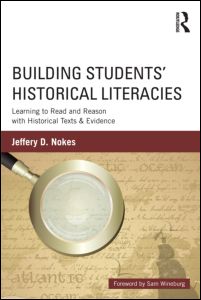PhD Candidate
University of New Brunswick
(Fredericton)
Picture this:
"Ms. Cordova, the principal at McArthur Middle School, walks down the hall of the social studies department during third period. She notices the lights are off in Mr. Hanks’ classroom and, glancing in, observes that he is showing students a video. Most students are filling out a worksheet. Ms. Cordova is distracted by loud voices coming from the next classroom down the hall. As she approaches, she hears students reciting in unison the names of the presidents of the United States in chronological order… Finally Ms. Cordova sees Mr. Rich’s classroom, the class she has come to observe. As she enters, students’ behaviour appears somewhat chaotic… As Ms. Cordova approaches, Mr. Rich nervously welcomes her, inviting her to join the students’ discussions. Students pay little attention to her. They are looking at a black and white photograph of children working in a textile mill..." (Noke, 2013, p.3)
These words are drawn from the opening passage of Jeffrey Nokes’ publication Building Students’ Historical Literacies: Learning to Read and Reason with Historical texts and Evidence (2013). Having completed 13 weeks of fieldwork with a class of seventh-graders (exploring the role of evidence and sources in history education), I see great relevancy in Nokes’ words.
Through "quasi-autobiographical" vignettes that set the stage for each chapter, we enter into the world of the classroom teacher. In this way we are able to empathise with the challenges—as well as rewards—teachers face in integrating Historical Thinking concepts into history education. Indeed, as both Ronald Martinello and David Bussel have confided, the transition from a "Mr. Hanks" to a "Mr Rich" is not an easy task. Reflecting back on my own (relatively brief) classroom experience, such a transition in learning culture can be challenging at best; Nokes, however, demonstrates how it can be done.
Over 13 chapters, he points out how students can be enabled to use evidence to respond to interpretive questions about the past. This is accomplished by using primary and secondary source accounts, as well as historical novels, census records, physical traces, and other artifacts, to explore well defined aspects of history. With each example, the teachers follow a common pattern for planning and delivery:
- selection of objective,
- selection of texts,
- determination of support and structure that students require to use the texts,
- and execution of the lesson (Nokes, 2013, p. 194).
For those beginning their teaching career, or for those simply wishing to adopt “Mr. Rich’s” teaching style, much practical advice can be drawn from this book. As Sam Wineburg points out, the author “combines salt-of-the earth wisdom with concrete examples from real schools and real teachers” (p.xii). Because of his insightful method of presenting pedagogical content knowledge, Nokes has helped me to gain more confidence in my own approach to inquiry-based learning.
References:
Bussell, D. (2014). Teaching historical thinking to B.Ed students: What happens part II (Retrieved from: http://thenhier.ca/en/content/teaching-historical-thinking-bed-students-what-happens-part-ii )
Martinello, R. (2014). Thoughts on how to teach using historical thinking concepts. (Retrieved from: http://historicalthinking.ca/blog/561 )
Nokes, J. (2013). Building students’ historical literacies: Learning to read and reason with historical texts and evidence. New York: Routledge.

No comments:
Post a Comment